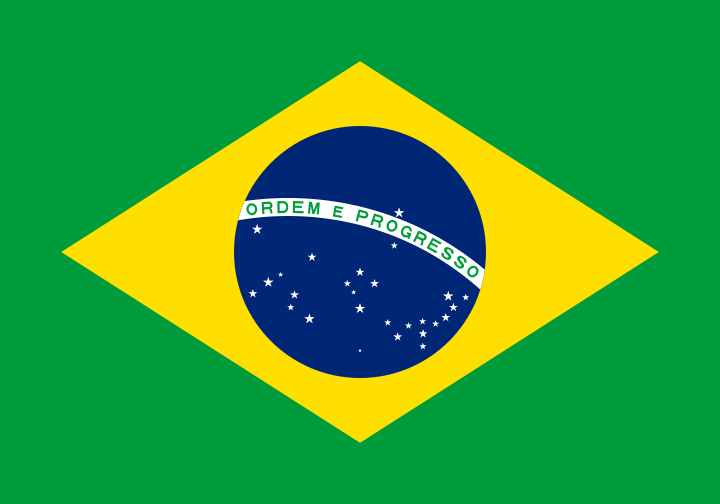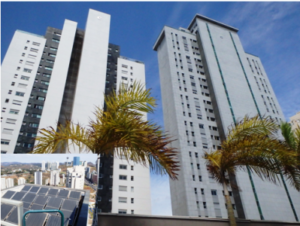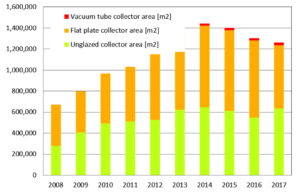“I appreciated the initiative of introducing a new standard”
March 11, 2013
Elizabeth Duarte Pereira can look back at 40 years of solar thermal research in Brazil. Today, she is Professor at the UNA University Centre in Belo Horizonte in the state of Minas Gerais and is about to help set up a new test facility in Brazil – the third in her research career. During her stay in Berlin for the international SMEThermal conference, solarthermalworld.org sat down with Pereira to talk about quality issues, standards and Brazil’s solar-supported social housing programme.
solarthermalworld.org: When was your first encounter with solar thermal technology?
Pereira: Actually, that was 35 years ago when I was writing my thesis on solar drying processes in agriculture for my Master’s in Mechanical Engineering at the Federal University of Minas Gerais, UFMG. I was able to draw from my experiences at the UFV, the Federal University of Viçosa, in the state of Minas Gerais because this university had a large agricultural department. I have researched solar thermal technology ever since.
solarthermalworld.org: You are famous for having helped set up test facilities for solar thermal collectors and systems across Brazil. How did it all start?
Pereira: Back in the 80s, statewide energy utility CEMIG had become interested in solar thermal and paid for the first test stand equipment at the UFMG, at which I had started as a professor. Between 1984 and 1986, we tested the three collector manufacturers from the state of Minas Gerais: Enalter, Tuma and Pantho. All three of them are still on the market today. And a few years later, in 1992, two more companies followed from the state of São Paulo, which are also still manufacturing today: Soletrol and Transsen.
In 1995, I became professor at the Pontifícia Universidade Católica de Minas Gerais. It was again the utilities CEMIG and Eletrobras – the latter one of the major power utilities in Brazil – which financed the lab equipment. I founded the GREEN laboratory, at which we tested 120 collectors between 1997 and 2004. The commissioning of a sun simulator in 2005 significantly increased our test capacities to 425 collectors within the following 4 years.
solarthermalworld.org: Why were the utilities interested in setting up solar thermal laboratories?
Pereira: There was a strategic mandate for the utilities to diversify their portfolio and they were interested in getting to know other technologies – especially CEMIG, which is mostly state-owned. In 2009, I changed university again. I am now at the UNA University Centre in Belo Horizonte, at which I am again in charge of setting up a new test lab. The contracts with the suppliers of the outdoor test racks, as well as the mechanical as well as the rain spray test facilities are signed. Only the solar simulator has not been part of the CEMIG package this time. Unfortunately, that means a greatly reduced capacity of the test facility, since we can test around 40 collectors outdoors and around 300 with the sun simulator per year.
solarthermalworld.org: What made Belo Horizonte the solar city of Brazil, with more than 3,000 solar systems installed in the city?
Pereira: This city was faced with a very difficult situation 30 years ago. First, there was no natural gas distribution system. Therefore, solar was a very cost-effective solution to replace electric boilers and electric showers. The second important factor was CEMIG’s continuous support for the solar thermal sector. This led to a kind of solar culture in the city and in Minas Gerais, too. With Eletrobras’s financial support, the National Energy Conservation Programme, PROCEL, has exported these good experiences to other parts of the country.
solarthermalworld.org: Who were the early buyers of collectors thirty years ago?
Pereira: At the beginning, it were the rich upper-class people who bought solar water heaters, because they had many electric hot water heaters and solar did save them a fair bit on their high electricity bill. So, the reasons for the decision were economic, not environmental in nature. Middle-class families use very cost-effective electric showers with lower flow rates, which have made this client group difficult to reach for solar.
solarthermalworld.org: Brazil was one of the first countries worldwide to introduce a label for solar water heaters. How did that happen?
Pereira: The National Institute of Metrology, Quality and Technology, INMETRO, had already had several efficiency labels for appliances in place since 1984, categorised in classes A, B, C and D. So, when I presented the results from the first collector tests to the Brazilian industry association ABRAVA in 1992, they decided to ask INMETRO to create a solar label. The first requirements for the label classes were still created in cooperation with the manufacturers. INMETRO, however, then decided to set up the levels in a way that all market-relevant collectors at that time would only reach a B. This left room for improvement. Fifteen years later, more than 64 % of the collectors reached class A. In the coming months, INMETRO will prepare new upgrade classes in order to divide products more evenly among the classes.
solarthermalworld.org: The state housing programme Minha Casa Minha Vida has increased the market volume a lot in Brazil. Has the programme also tightened the quality standards?
Pereira: Indeed, the first phase of Minha Casa Minha Vida in 2010/2011 saw 41,000 solar water heaters installed on social housing. Last year, the number even rose to 111,000 new homes that include a solar hot water system. The government-owned bank CAIXA sets the terms for the technical requirements and the responsibilities of each party – manufacturers, suppliers and installers. Collectors require the INMETRO label and have to reach class A or B.
The solar mandatory regulations of Minha Casa Minha Vida are considered a priority in the Strategic Operational Plan prepared by GT-SOL, a high-level working group on solar thermal energy. This group, which is coordinated by the Ministry of the Environment, also includes representatives from the Ministry of Mines and Energy, Eletrobras, the Ministry of Cities, CAIXA, the Ministry of Development, Industry and Foreign Trade and INMETRO.
solarthermalworld.org: Your university did some monitoring of the social housing programmes. What were the results?
Pereira: We conducted a study among the users of the first phase of Minha Casa Minha Vida. Social workers visited families in five cities, which is 14 % of the total 41,000 solar-equipped homes. 80 % of the interview partners were satisfied or very satisfied users. Among the 20 % who were not satisfied were many families who did not really succeed in using the mixing taps in the bathroom correctly, which meant the water was either too cold or too hot.
solarthermalworld.org: Have you also carried out performance tests?
Pereira: In cooperation with Eletrobras, we have just started the technical monitoring of 10 homes in four different housing projects – a total of 40 homes with detailed monitoring. We will gather data on radiation, solar yield, as well as household consumption. In the other buildings, we will monitor the monthly electricity bills and create a questionnaire on the habits and use of hot water.
We know from other measurements that families save between 50 and 70 % on their annual electricity bill through solar water heaters. We have also learned from the above-mentioned survey that the low-income families use the saved money to buy food, so the social aspect of the solar programme is 100 % fulfilled. A weak point in many housing areas has been the orientation of the buildings, which is not optimal for solar use. To avoid this in the future, we are organising courses around the country – for builders and engineers, architects, as well as social workers of the CAIXA – with support from the German Agency for International Cooperation, GIZ.
solarthermalworld.org: Are you satisfied with the quality of the collectors in Brazil today?
Pereira: I think that some things still need to be improved upon. I appreciated the initiative of the Brazilian Association of Technical Standards, ABNT, which introduced a new standard, ABNT NBR 17747, based on European standard EN 12975-2 and took part in the working group that drafted the new standard. During tests, we still have many problems with broken glass and a weak frame construction of the collector. The collector manufacturers have adjusted their products to the current legal requirements. I, however, believe that with the introduction of the new standard, the new tests and the audits of production lines, the quality of domestic products should improve significantly.
The interview was conducted by Bärbel Epp.
More information:
http://www.inmetro.org
http://www.una.br/
http://www.cemig.com.br/Paginas/Default.aspx
http://www.eletrobras.com/


